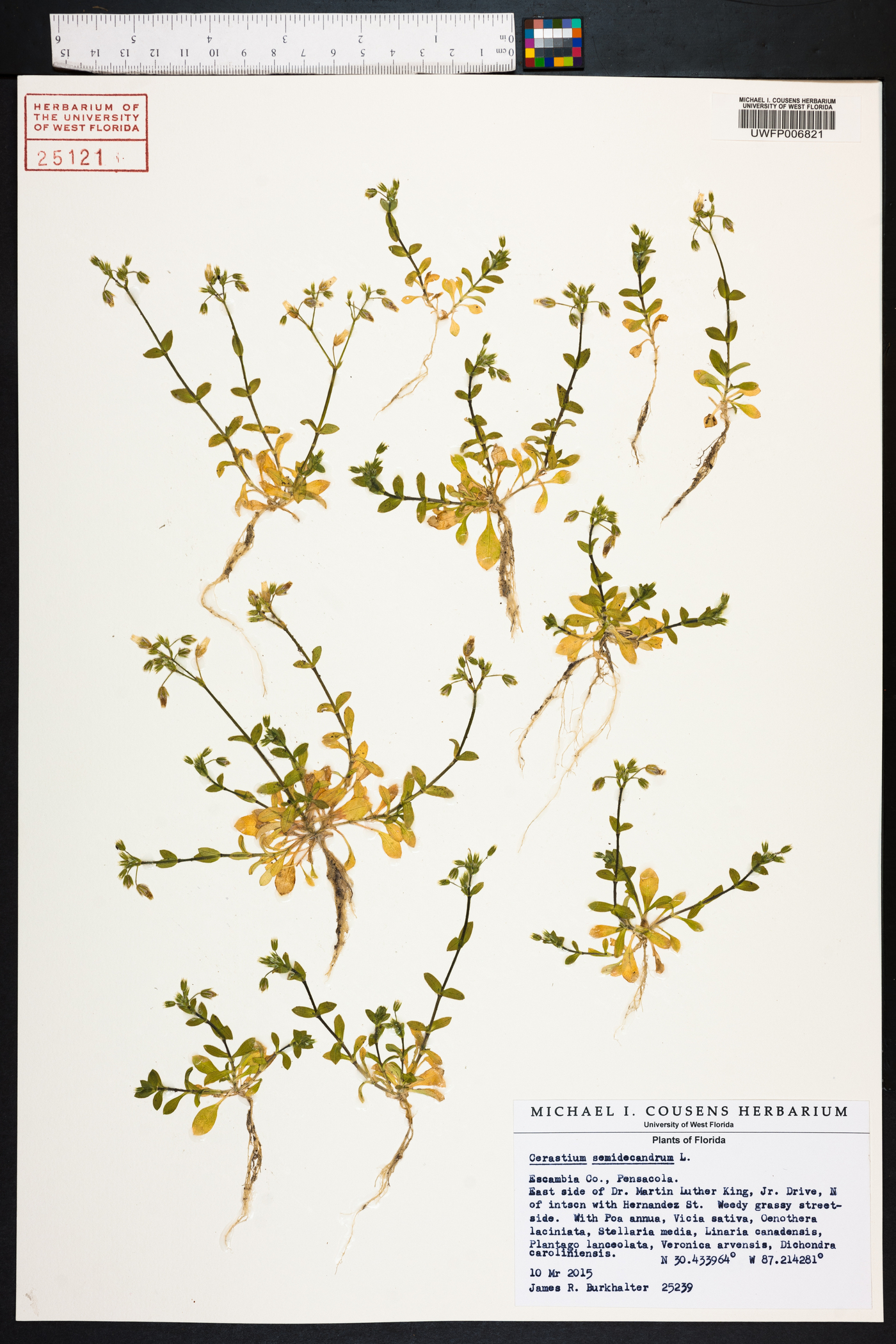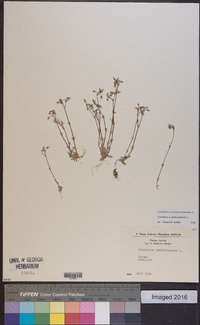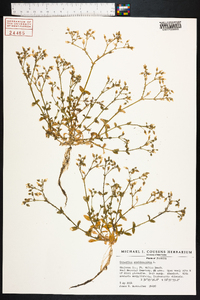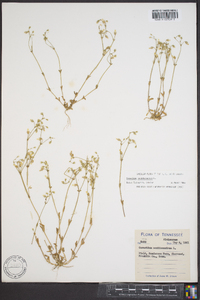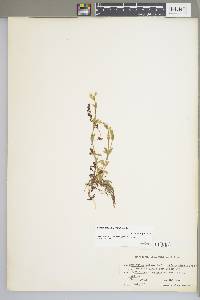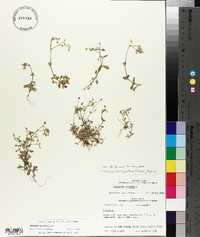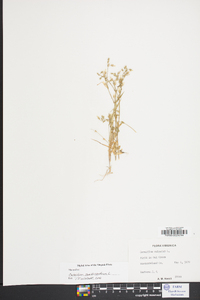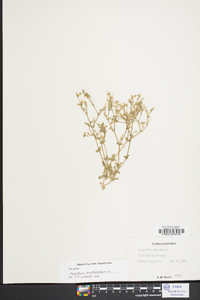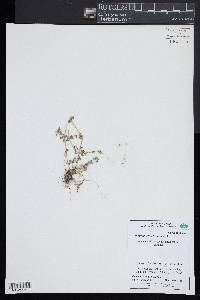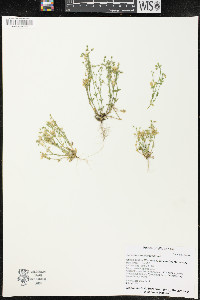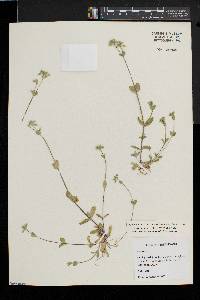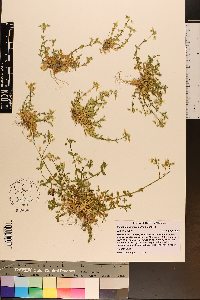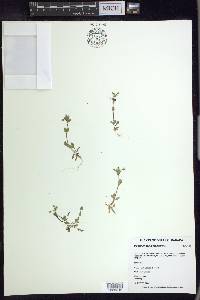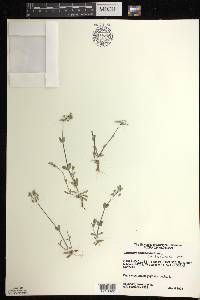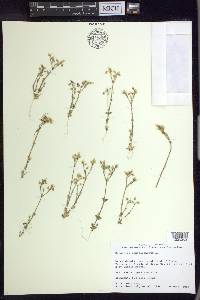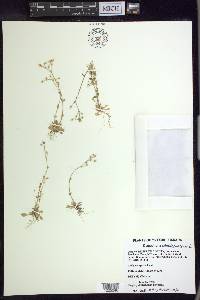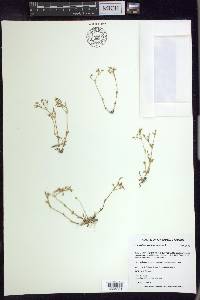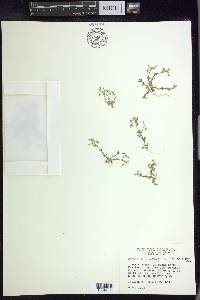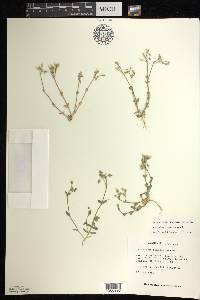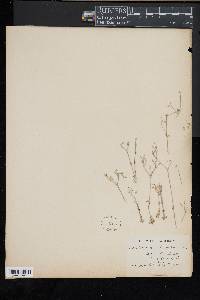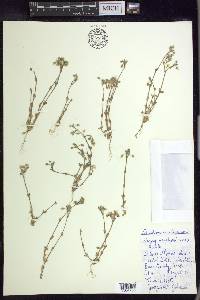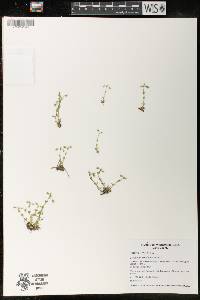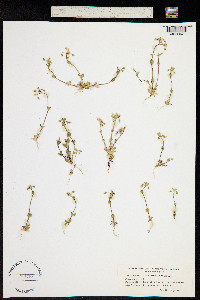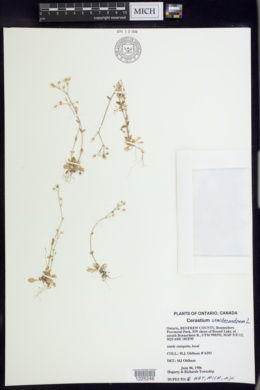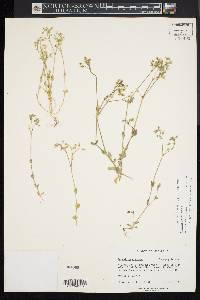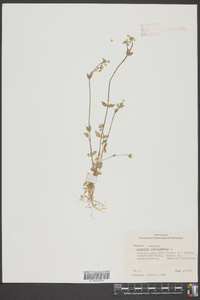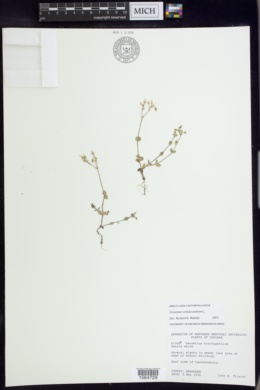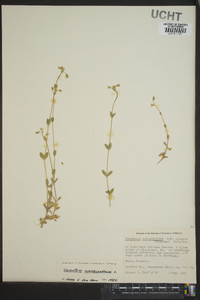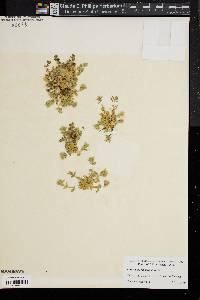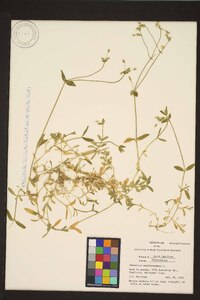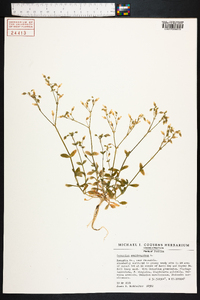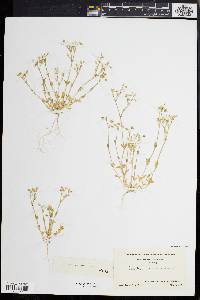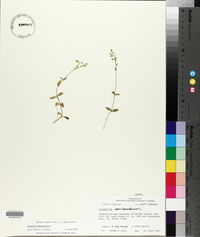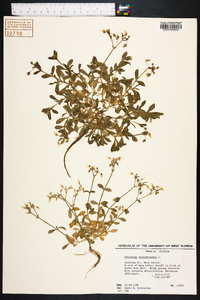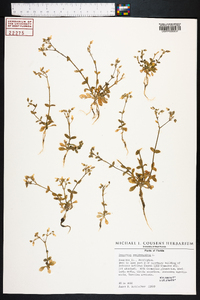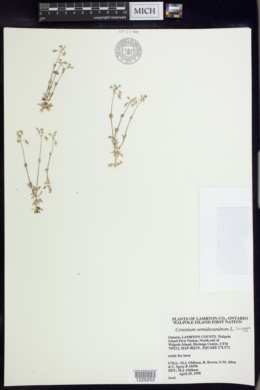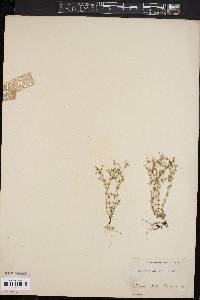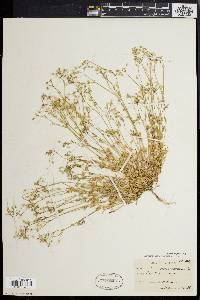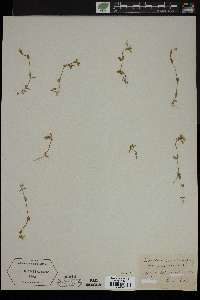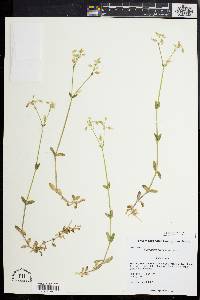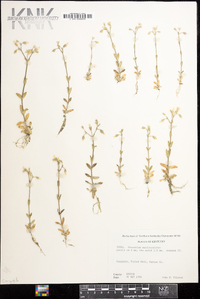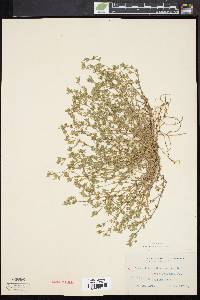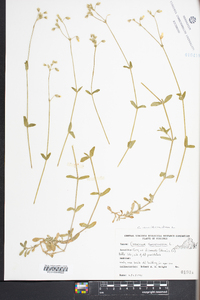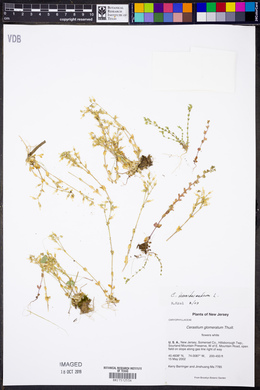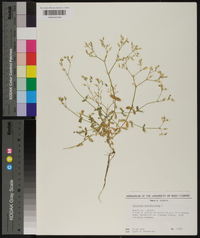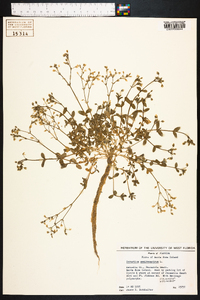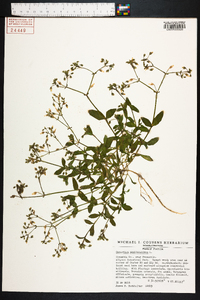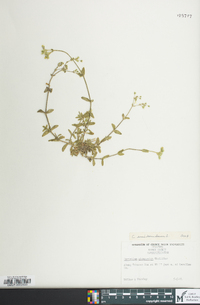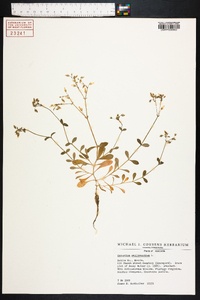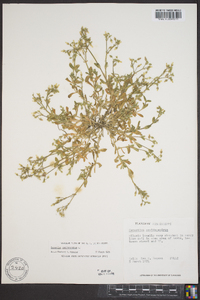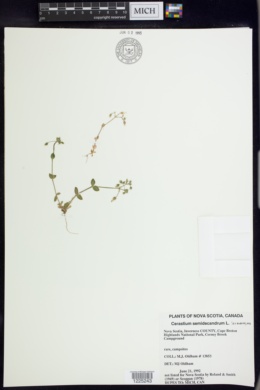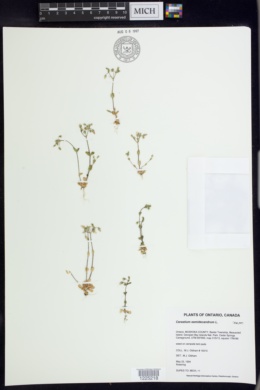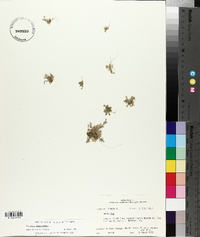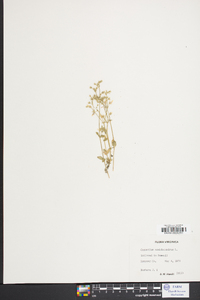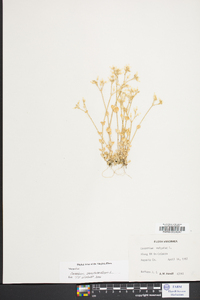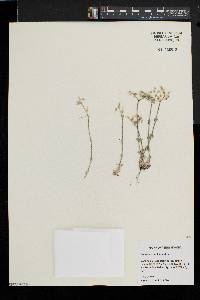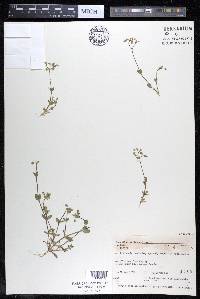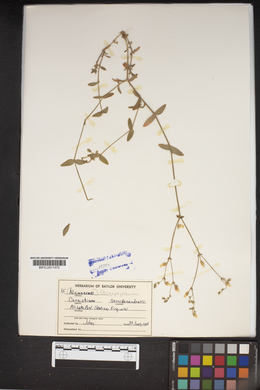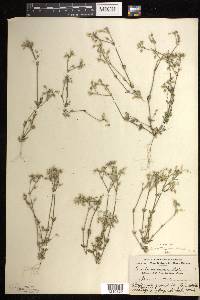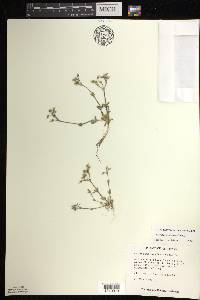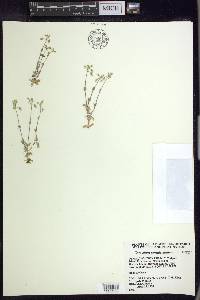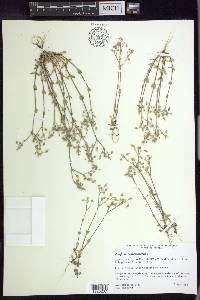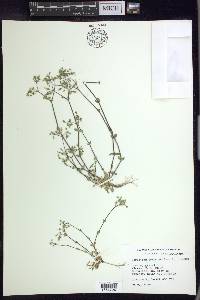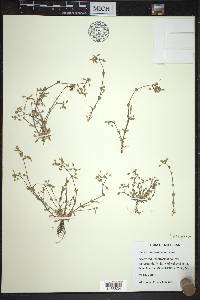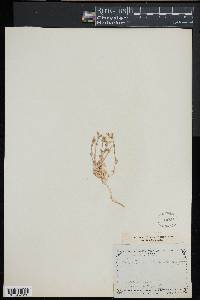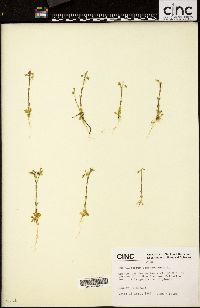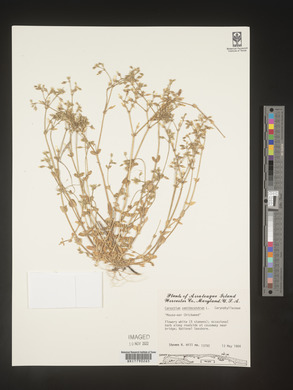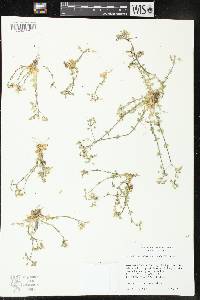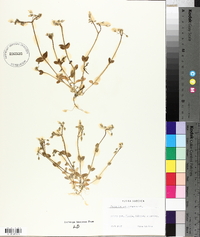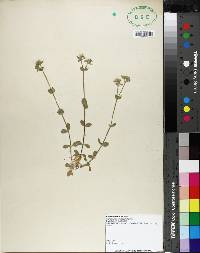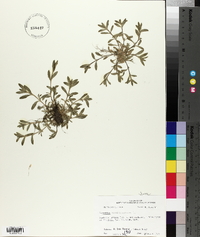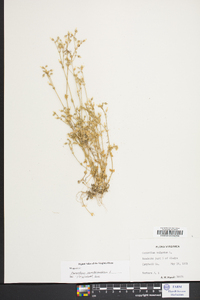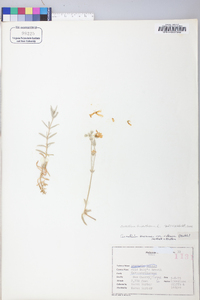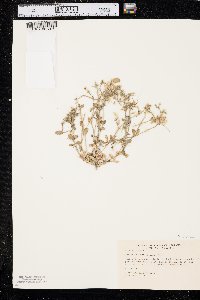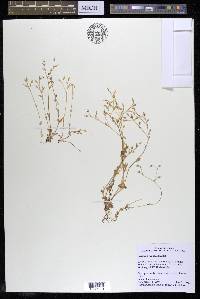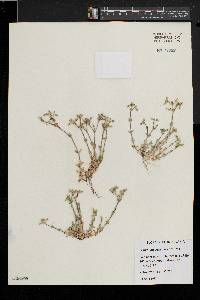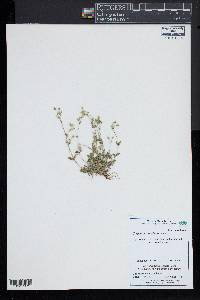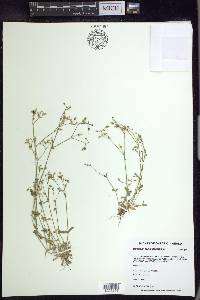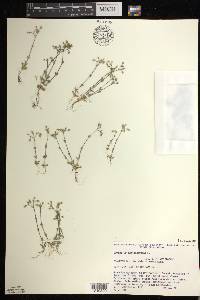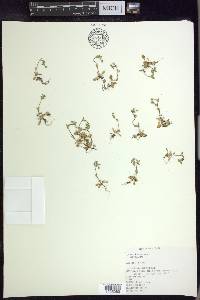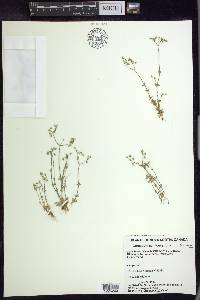Cerastium semidecandrum
|
|
|
|
Family: Caryophyllaceae
Five-Stamen Mouse-Ear Chickweed
[Stellaria semidecandra (L.) Link] |
Plants annual, with slender taproot. Stems erect or ascending, branching at base, 1-20 cm, viscid, covered with short, dense, glandular and eglandular hairs; short axillary tufts of leaves absent. Leaves not marcescent, sessile but proximal leaves often spatulate; blade 5-18 × 2-5 mm, covered with short, white hairs; basal leaves with blade narrowly oblanceolate and ± spatulate, apex obtuse; cauline with blades ovate to elliptic-oblong, apex obtuse to acute. Inflorescences open, 3-30-flowered cymes; bracts lanceolate, with broad, scarious margins, glandular-pubescent. Pedicels curved at apex, often sharply angled at base, 3-8(-12) mm, 1-3 times as long as capsule, densely glandular-pubescent and viscid. Flowers: sepals narrowly lanceolate, 3-5 mm, margins broad, apex acute, glandular-pubescent; petals with unbranched veins, oblanceolate, 2-3 mm, shorter than sepals, apex notched; stamens 5; styles 5. Capsules cylindric, slightly curved, 4.5-6.5 mm, 1.5-2 times as long as sepals; teeth 10, erect, margins convolute. Seeds pale yellowish brown, 0.4-0.6 mm, finely tuberculate; testa not inflated. 2n = 36. Flowering spring. Common weed in dry, sandy, and gravelly places, roadsides and footpaths, parking lots, dunes; 0-300 m; introduced; B.C., N.S., Ont.; Ark., Conn., Fla., Ga., Idaho, Ill., Ind., Kans., La., Md., Mass., Mich., Mo., Nebr., N.J., N.Y., N.C., Ohio, Oreg., Pa., R.I., S.C., Wash., Wis.; Eurasia. The very broad, scarious margins of the sepals and bracts distinguish this small, ephemeral species.
Annual herb with a slender taproot 5 - 20 cm tall Stem: upright or ascending, branched at the base, sticky-hairy. Leaves: opposite, stalkless, 0.5 - 1.8 cm long, 2 - 5 mm wide, reverse lance-shaped to spatula-shaped (basal) or egg-shaped to broadly elliptic (stem), with short, white hairs. Inflorescence: an open cluster (cyme) of three to thirty flowers subtended by glandular-hairy, lance-shaped bracts. The bracts have broad, scarious (dry, thin, and membranous) margins. Flowers: white. Stalk curved at apex, 3 - 8 mm long, densely glandular-hairy and sticky. Stamens five, sometimes ten. Styles five. Sepals: five, distinct, 3 - 5 mm long, narrowly lance-shaped with a pointed tip, glandular-hairy. Petals: five, white, 2 - 3 mm long (shorter than the sepals), reverse lance-shaped, shallowly notched, clawed, with unbranched veins. Fruit: a dehiscent capsule (opening by ten short, upright teeth), 4.5 - 7 mm long, longer than the sepals, cylindrical, slightly curved, smooth or nearly so. Seeds numerous, pale yellowish brown, egg- to kidney-shaped, dorsally grooved. Similar species: Having some or all of the bracts with scarious margins (or at least the upper part of the bracts) helps to distinguish this species, Cerastium arvense, C. fontanum ssp. vulgare, and C. pumilum from most other Cerastium in the Chicago Region. Cerastium arvense differs by having petals that are usually more than 10 mm long. The perennial C. fontanum ssp. vulgare differs by having basal offshoots and ten stamens. Cerastium pumilum differs by having deeply notched petals with branched veins. Flowering: mid-April to early June Habitat and ecology: Introduced from Europe. Abundant in disturbed sandy soil, including sandy cemeteries and nurseries. Occurence in the Chicago region: non-native Etymology: Cerastium comes from the Greek word keras, meaning horn, referring to the horn-like shape of the seed capsule. Semidecandrum means "half of ten stamens." Author: The Morton Arboretum Viscid-pubescent annual 0.5-2 dm; lvs relatively small, mostly 0.5-1(1.5) cm, the basal oblanceolate, the cauline ovate to broadly elliptic; infl often compact as in C. viscosum, varying to moderately open and dichasial, the pedicels to a little longer than the sep, usually deflexed in fr; bracts conspicuously scarious-margined and -tipped, the distal portion of the upper ones generally wholly scarious for ca 1 mm or more; sep 3-5 mm, lanceolate, acute, stipitate-glandular, with few or no eglandular hairs, scarious-margined; pet shorter than the sep, only shallowly notched, generally to a depth of less than 0.5 mm; stamens 5 or sometimes 10; capsule 4.5-7 mm, less than twice as long as the sep; seeds smooth or nearly so; 2n=36. Native of Eurasia, now intr. as a weed in much of our range but not so ubiquitous as C. viscosum. Gleason, Henry A. & Cronquist, Arthur J. 1991. Manual of vascular plants of northeastern United States and adjacent Canada. lxxv + 910 pp. ©The New York Botanical Garden. All rights reserved. Used by permission. |

